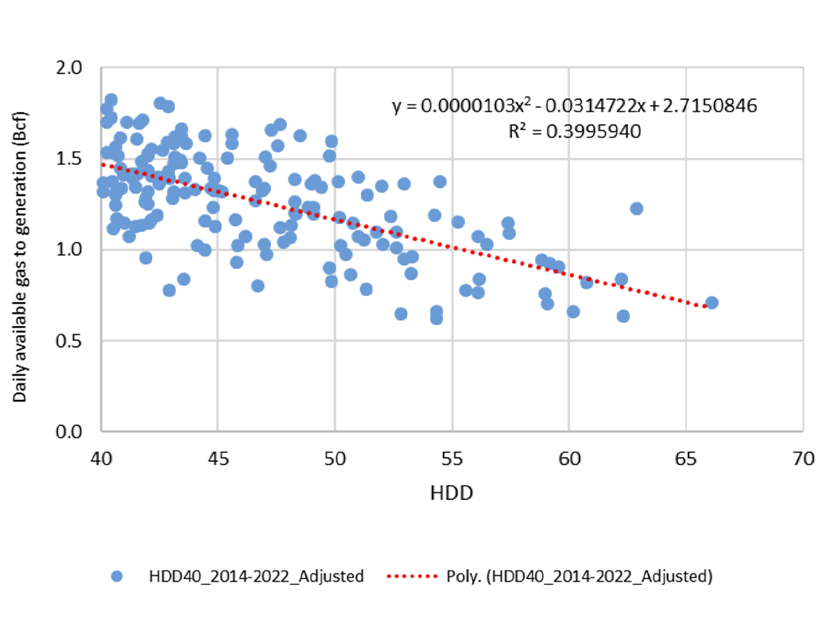ISO-NE provided additional detail in response to stakeholder questions about how the RTO plans to model oil and gas resources as part of its ongoing Resource Capacity Accreditation (RCA) project at the NEPOOL Reliability Committee (RC) on Feb. 14.
The RTO explained the Resource Adequacy Assessment (RAA) modeling approach to the RC in January. (See ISO-NE Details Resource Modeling Plans for Capacity Accreditation.) Stakeholders followed up with feedback related to the modeling of imports from Saint John LNG, the uncertain future of the Everett Marine Terminal (EMT) and variability in the amount of gas available to generators.
Fei Zeng of ISO-NE said the current modeling approach “accounts for the EMT impact in a balanced way, given its uncertain future status. The adjustments made to historical availability to generation do not contemplate a single scenario of EMT either continuing operation or retired; therefore, fewer additional adjustments will be needed when EMT status becomes known.”
If EMT is not retained, ISO-NE will adjust its modeling to consider how the loss would impact local gas distribution companies, and the knock-on effects this would have on gas available for generators, Zeng said. If EMT is retained, ISO-NE will assess how much “additional available gas to generation EMT can provide through the remaining capacity headroom” on the region’s major gas pipelines.
Massachusetts’ two largest gas utilities recently announced agreements with Constellation, the owner of EMT, to keep the facility open through May of 2030, pending approval of the Massachusetts Department of Public Utilities. (See Constellation Reaches Agreements to Keep Everett LNG Terminal Open.)
In response to feedback that the modeling approach “assumes higher LNG imports from Saint John than have been observed historically,” Zeng said the modeling approach is intended to calculate how much nonfirm gas is available when gas utility demand is accounted for, and modeling “unavailability due to economic reasons for the future is very difficult to predict and is generally not considered in the resource modeling.”
Regarding concerns about whether the modeling will adequately capture variability associated with extreme temperatures, Zeng said ISO-NE thinks the approach “reasonably reflects the gas fleet availability under different temperature conditions,” adding that the RTO “is open to further evaluating the inclusion of variability in the gas profile modeling as a future enhancement.”
Zeng also discussed how the RCA changes will affect how ISO-NE models the load profile in RAA. The load shape is currently built “by scaling the 2002 hourly load shape to reflect the forecasted seasonal ‘gross’ peaks.”
ISO-NE is planning to switch to “a composite seasonal load shape that is based on the 2021 annual net load characteristics and reflecting 2021 hourly weather for [April through September] and the 2013/14 hourly weather” for October through March.
Zeng noted that the 2002 load shape does not capture recent changes stemming from energy efficiency gains and behind-the-meter solar. He said the updates would better align ISO-NE with the methodology used in NPCC seasonal assessments.


